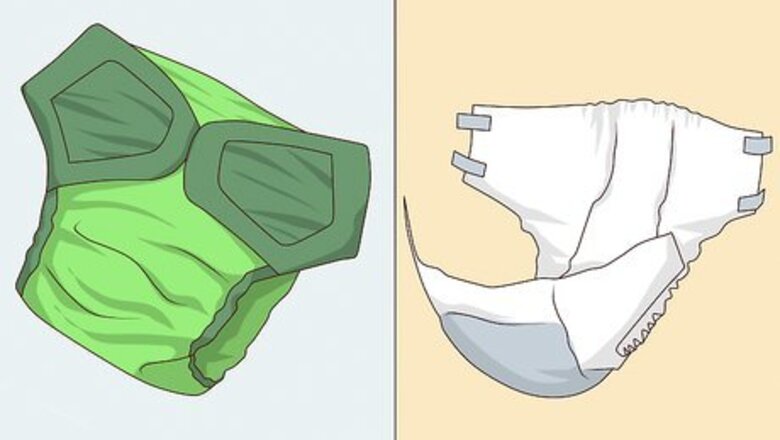
views

Decide whether or not you want to use cloth or disposable diapers. You can also use both styles. One reason to do this is because you save some money by not using as many disposable diapers. In this case you can alternate your use of the different types of diapers. For example on some nights you can wear cloth diapers to bed and on other nights you can wear disposables to bed. Another reason to use both kinds of diapers is because some people find cloth diapers covered with plastic pants uncomfortable to wear during warmer times of the year such as spring and summer. In that case the individual switches to disposable diapers.Finally alternating your use of disposable and cloth diapers can cut down on the wear and tear that can occur from laundering cloth diapers. Some people say that they've had cloth diapers last for years, but some wear still does occur to a certain extent and using both types of diapers has the potential to make the diapers last longer.
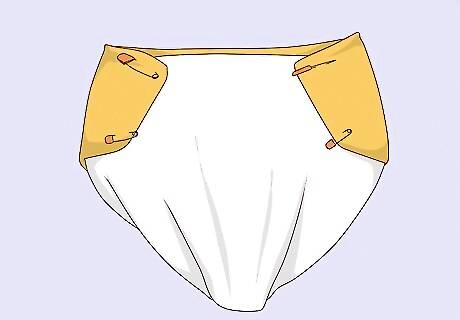
If you decide on using cloth diapers pick which style you want to wear to bed. One style of cloth diaper that is very effective for managing bedwetting are pin-on style cloth diapers. Although somewhat old fashioned there are some people who use these types of diapers on their babies. In addition there are incontinent adults who still use pin-on style diapers. Some of the advantages of pin-on diapers include the following: Pin-on diapers are customizable to a large degree-they offer a great deal of flexibility with being able to adjust the diapers to fit different body types as well as flexibility with how you layer the diapers and how many diapers you can add(this in turn allows for more effective protection), they tend to be the most durable style of diaper(pin-on diapers have been called the “workhorse” of the diaper world by some people), and this style of diaper can double as a tool for use in household tasks such as dusting, car washing, and other chores. These are just some of the advantages of using pin-on diapers. On the other hand some individuals might find the pins to be a hassle.That being said, it might be worth experimenting with this style of diaper due to how effective they are with nighttime protection. There are different fabrics used for cloth diapers-flannel, birds-eye cotton, as well as gauze. Gauze diapers are presumably very comfortable to wear particularly during warmer weather in addition to being highly effective for managing bedwetting, although there are people who prefer the other fabric styles also. There are other types of cloth diapers besides pin-on style diapers. These styles of diapers have different ways of fastening the diapers. These include cloth diapers with Velcro fasteners, cloth diapers with snaps on the sides, as well as pull on diapers which are also known as diaper pants. While these styles are worn by some people there are some disadvantages with these diapers: pull-on cloth diapers tend to be less absorbent than pin-on diapers for heavier forms of incontinence such as bedwetting, in some instances the cloth diapers with Velcro fasteners have problems with the Velcro wearing out after a certain number of washings, and the snaps on snap on diapers can break. These are some of the other reasons why the adult who wets the bed may want to consider using pin-on cloth diapers if they want to try cloth diapers. The only reason it might not be advisable to use this style of cloth diaper is if the person has some cognitive and/or physical disability that might make it difficult for him or her to handle the pins. For instance the tremors associated with neurological diseases such as Parkinson's can effect a person's dexterity and therefore would make it difficult for this individual to diaper themselves using this type of diaper. There is a slight learning curve associated with using pin-on diapers but there is plenty of information online that talks about how to pin on diapers.With these caveats in mind, a person needs to decide for him or herself what type of diaper(or combination of diapers) works best for them. Kelly's Closet(www.kellyscloset.com) has an illustrated step-by-step guide on how to fold and pin on cloth diapers. Although the instructions are for baby diapers they are also applicable to adult size pin-on diapers. The "newspaper" and "angel wing" folds seem like the easiest folds to do. To find this section, go to the top of the website and click on cloth diapers, a pull down menu will appear. Then click on the section on prefold and flat diapers. Then it will say cloth diapering 101. That is where the information on folding cloth diapers is.
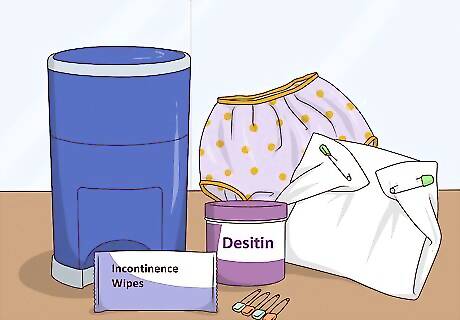
Purchase other diapering supplies. If you do decide to wear pin-on cloth diapers there are a number of supplies you'll need to buy. Waterproof pants must be worn over cloth diapers because unlike disposable diapers there is no waterproof outer layer to keep clothes and bedding dry. Plastic pants(which many people call “rubber pants”, even though this is a misnomer) are the most popular type of waterproof pants and in general are the most durable type of waterproof pants. Plastic pants are also known as "vinyl pants", vinyl being a type of plastic. There are several brands of plastic pants and cloth diapers which are recommended by adults suffering from incontinence particularly those with bedwetting problems. These brands and where to purchase them are discussed on the blog “Tips on Managing Bed-Wetting.” This blog also lists several places that sell adult size disposable diapers. Other supplies that you have to purchase are diaper pins for fastening the diapers. Diaper pins can be found at places such as Walmart in the baby section, places that sell adult size cloth diapers, as well as similar places. Fabric stores such as Jo Anne Fabrics may also have pins which may be suitable for using with cloth diapers.When purchasing diaper pins, buy ones with the plastic heads not regular safety pins, regular safety pins can come undone and stick yourself. Other supplies you may need are a diaper pail(if you decide on washing the cloth diapers and plastic pants all at once) , diaper rash products such as Desitin, A&D ointment, Balmex, and petroleum jelly(Vaseline being an example) Incontinence wipes are another product that you might consider purchasing. Baby wipes can be used for this purpose and are found in the baby section of places such as Walmart, Target, as well as grocery stores. Non alcohol based wipes are the type of wipes generally recommended for this purpose particularly for those with sensitive skin. Incontinence wipes(as well as products for the treatment and prevention of diaper rash) are sold by companies that sell adult incontinence products.
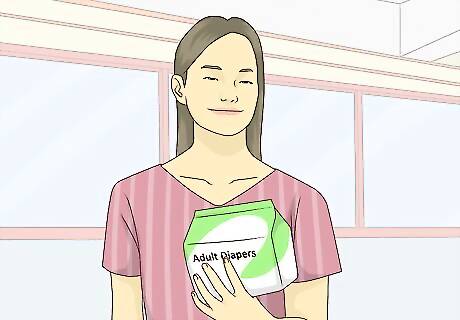
Be aware of the terminology used for adult incontinence products. If purchasing disposable diapers be aware of the terminology used to market these products. Since there is a great deal of stigma associated with adult diapers, manufacturers have come up with creative names for these products. The most popular name and one that has been used since these products were introduced in the late 70s is “disposable briefs” although some places also use the term “adult diapers.” Disposable briefs have the same fit and design as baby diapers such as Pampers, Luvs, and Huggies-they have tapes on the sides for fastening the garments, elastic leg gathers to prevent leaks, a waterproof plastic or cloth like outer layer, and some of them also have elastic waistbands which are also designed to prevent leaks. Although there are pull on style disposable diapers for managing bedwetting(known as disposable underwear or “pull-ups”) they tend to provide less effective protection for heavier forms of incontinence such as bedwetting. The adult size disposable diapers with tape tabs tend to offer the most absorbency for nighttime use. In addition the tapes allow for flexibility with how you adjust the diapers.

Get appropriate measurements. Most websites list the waist measurements for both cloth and disposable diapers but some also list hip measurements and weight ranges that the diapers will fit. A diaper that is too loose will not provide effective protection and one that it too tight will be uncomfortable so it's important that you familiarize yourself with these and if you have any questions be sure to ask a customer service rep before you buy the diapers.
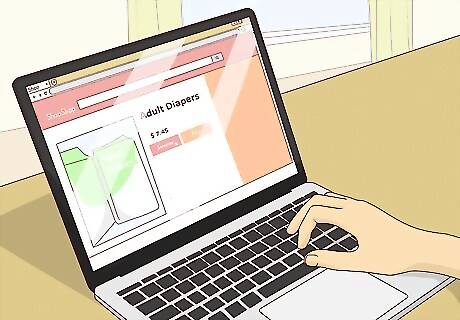
Ask for samples. Many websites that sell disposable diapers for adults have samples either for free or a nominal price. This is a good way to determine what brand of diaper works best for you.
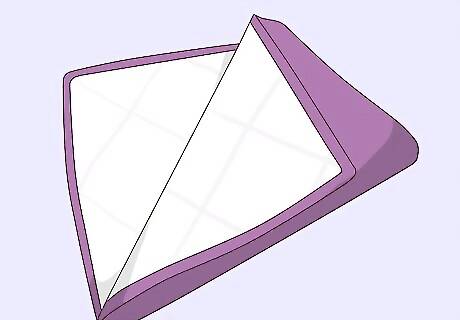
Buy a waterproof sheet to put over the bed. Even though you are wearing diapers to bed, it's still a good idea to put a rubber or plastic sheet over the bed for added protection just in case the diapers leak.

Check for signs of diaper rash. Some people are susceptible to diaper rash and it's important that you maintain appropriate hygiene when wearing diapers in order to avoid getting a rash. Those individuals wearing cloth diapers covered with a pair of plastic pants are particularly vulnerable to getting rashes, although rashes can occur when wearing disposable diapers too. That being said this should not discourage you from trying pin-on cloth diapers covered by plastic pants(after all many people wear these types of diapers without having any issues), just to be cognizant of the fact that rashes can occur. Online sites such as WebMD as well as similar places have information about the signs of diaper rash as well as methods to treat it.
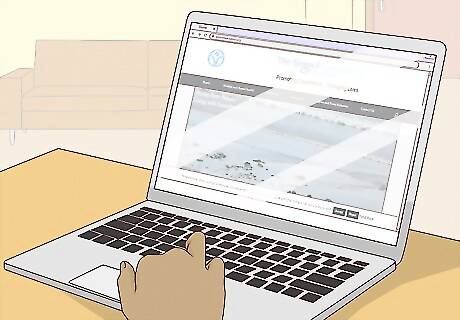
Check online for information regarding incontinence garments. There are a number of good online sources that contain information about incontinence including information about the many types of products available to handle the different forms of incontinence. A few good sources of information are The Simon Foundation for Continence, the NAFC(which stands for the National Association for Continence), as well as The New Diaper Primer. Among other things The New Diaper Primer has information about how to launder cloth diapers and information about the different types of cloth diaper fabrics. The url for this article is www.incontinentsupport.org. It's also a good idea to be familiar with the different forms of incontinence so you can buy an appropriate product. There are different levels of incontinence, as a result there are many products available. Bedwetting is a heavier form of incontinence and disposable briefs and cloth diapers tend to be the best products for this type of incontinence.












Comments
0 comment